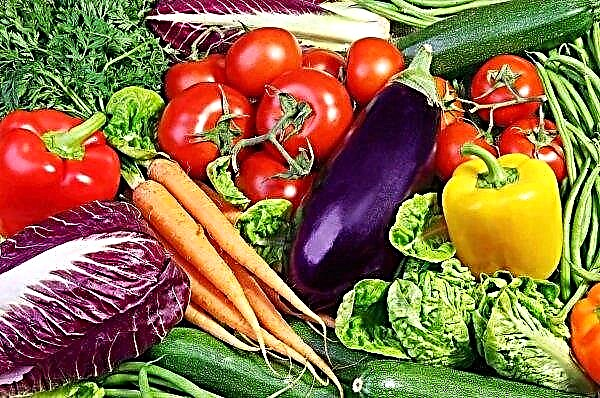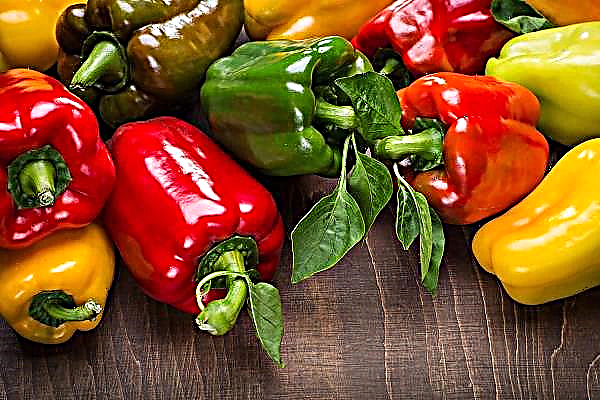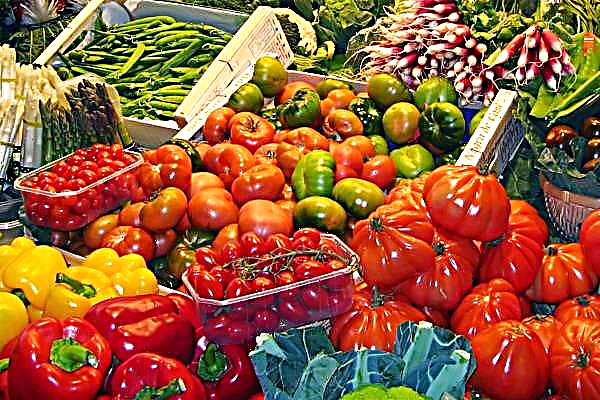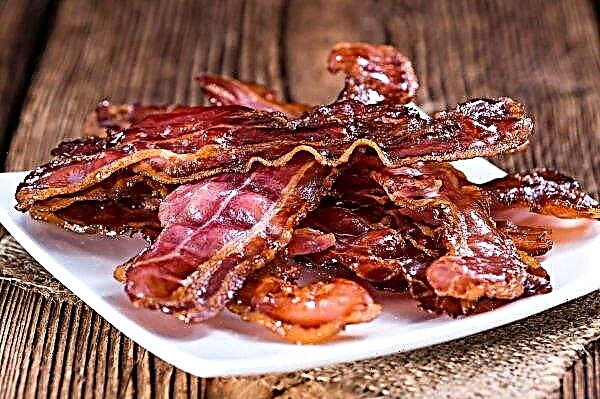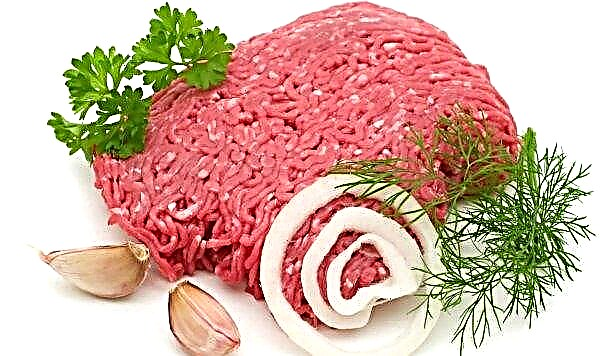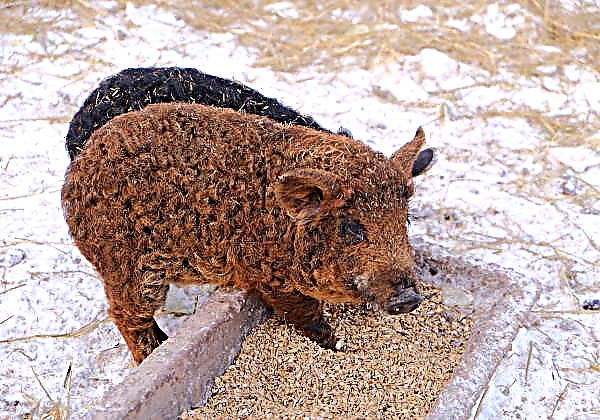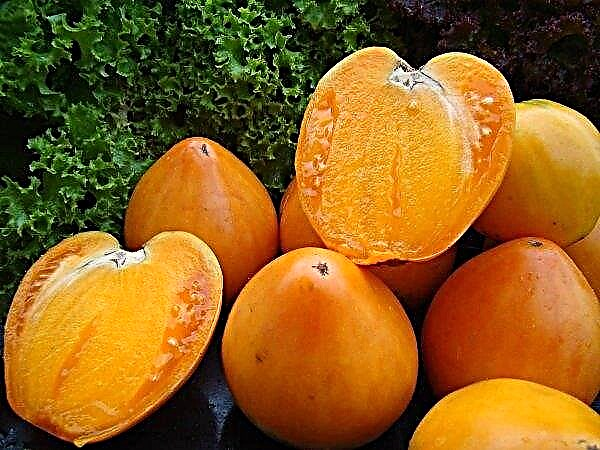Large-leaved hydrangeas are grown in many gardens, decorating them with their flowering in the summer months. One of the most decorative representatives of this culture is the variety Masya (or Masia), whose flowers are large, beautiful in color and have a pleasant aroma. At the same time, the plant is unpretentious in maintenance and can grow even in regions with cold winters. The botanical description of Hydrangea Masya, the features of its planting and cultivation, methods of propagation of the bush and the rules for combating diseases and pests of the culture are described further in the article.
Description of the winter-hardy variety Masya
Large-leaved hydrangea Masya (Hydrangea macrophylla Masja) has gained wide popularity in Europe. The plant is often used for solitary plantings, as well as a bright element of compositions from other trees and shrubs.

Botanical grade description:
- The height of the large-leaved shrub does not exceed 1.5 m. Its width is about 1.2 m.
- The crown is sprawling, but compact. It is formed by erect, vertically growing shoots.
- The leaves of the bush are large and ovoid in shape, painted in bright green. They densely cover the shoots along the entire length and have serrated edges.
- The flowering period lasts from early July to late September. Flowers are formed on last year's branches and shoots of the current year.
- Dense inflorescences have a spherical shape, and their width can reach 20-30 cm. The diameter of one flower is up to 2.5 cm.
- Petals have a serrated edge, painted in saturated pink or purple. Their number on each flower is from 3 to 5 pieces.
- During flowering, the bush exudes a pleasant aroma.

How to plant
To large-leaved hydrangea Masya successfully rooted in the soil and annually pleased with abundant flowering, certain rules must be followed when planting it. Planting material is best bought in specialized stores and nurseries.
Did you know? The Japanese name for hydrangea is “adzsai”. Translated, this word means "purple sunny flower."
Seedlings should have a healthy appearance and branched root system, surrounded by a moderately moist earthen lump. Before planting young plants in the soil, you need to choose a suitable site for them and prepare it. This procedure must be performed at the right time so that the plants do not suffer from frost.
Landing time
Adult plants of this variety have good frost resistance, but young specimens can die under the influence of low temperatures, so it is recommended to plant large-leaved hydrangea Masya in the spring, when the probability of return frosts passes. The best time for planting seedlings in the ground is the second half of May - while the bush will have time to take root before autumn.
Important! In areas with a warm climate, it is allowed to plant the variety Masya in the ground in early autumn. But in this case, a winter shelter is necessarily built around the plant to protect it from frost.
Site selection and preparation
In order to obtain annual and abundant flowering, as well as to prevent the appearance of diseases and pests, you need to choose a suitable site for planting hydrangea Masya.

It must meet the following requirements:
- it is well lit by the sun - it is best if the place is in the light before dinner and in the evening, so that in the middle of the day the bush is in partial shade and does not burn out;
- to have fertile soil with a pH level of 5.5–6 - loose loamy soil is best suited;
- to be away from drafts - hydrangea can be planted near hedges or buildings located on the north side of the bush;
- do not contain groundwater, lying at a depth of less than 1.5–2 m from the soil surface - in waterlogged soil the hydrangea roots will begin to rot.
Important! A few days before planting, the selected place must be cleaned of weeds and debris, and then dug up. Preparation of planting pits is carried out the day before, leaving a distance of 1.2–1.5 m between neighboring plants.
Soil preparation
Rapid rooting of a seedling is promoted not only by the correctly chosen place for planting, but also by suitable soil. It must be fertile, it must pass water and air well, therefore, for hydrangea, loose soil is prepared from such components:
- 2 parts of sheet land;
- 1 part of sand;
- 2 parts of peat;
- 1 part of compost.

Step-by-step instructions for planting hydrangea macrophylla:
- Dig holes with a depth and diameter of about 0.5 m.
- Put pieces of broken brick, gravel at the bottom of each well. Pour a handful of fertile soil mixture on top.
- Lower the roots of the plant into the pit so that the root neck is at the same level with the soil.
- Fill the recess with the remains of a nutritious soil mixture, filling the pit to the very top. Compact the soil around the seedling with your hands.
- Pour the bush with warm water so that the earth is wet to a depth of 30-40 cm.
- After completely absorbing the liquid, mulch the trunk circle with peat or compost.

Care
After the seedling is successfully rooted in the soil, it is provided with the necessary care. It consists of regular watering, periodic top dressing and pruning, which help maintain the decorative appearance of the plant and are the key to annual lush flowering. It is also necessary to properly prepare large-leaved hydrangea for winter, so that the bush can safely survive the frosts.
Did you know? In Europe, they learned about hydrangea thanks to the first French expedition led by Louis-Antoine de Bougainville. In 1768, he first saw this flower on the island of Mauritius and brought it to his native country.
Watering
Like other varieties of large-leaved hydrangea, Masya does not tolerate drought, and therefore needs regular watering. With sufficient rainfall, when the earth around the bush remains wet, you do not need to irrigate the crop.

In all other cases, watering is carried out according to the following rules:
- in moderately warm weather, irrigation is carried out 2 times a week, and during the heat - 1 time in 7 days;
- for each instance, about 30–40 l of warm, settled water is consumed;
- in order to preserve the bright color of inflorescences 2-3 times a month, special alum is added to the water for irrigation, which increases the acidity of the soil;
- plantings are irrigated in the early morning or evening, pouring liquid under the root.
Important! After each rain and watering, it is recommended to remove the crust formed on the surface of the earth, by loosening the area of the trunk circle. Weeds are removed as necessary and carried out of the site.
Top dressing
The plant draws strength for growth and flowering from the soil, so you need to periodically add nutrients to it. If during planting the gardener filled the planting pits with nutritious soil mixtures, then the next time the hydrangea needs to be fertilized only after 2 years.
Fertilizer application:
- in May, 30 g of superphosphate and sulfuric potassium are added under each bush, and 20 g of urea per 1 m² of area is also used. This stimulates the active growth of shoots and green mass;
- in early July, each plant is fed 40 g of potassium sulfate and 70 g of superphosphate - this stimulates the formation of a large number of buds;
- in August, rotted manure or compost in the amount of 15 kg is applied under one plant - this top dressing allows prolonging flowering;
- in September, hydrangea is watered with a mullein solution, so that it regains strength before wintering - 3 kg of funds are taken per 10 liters of water.
Important! When feeding hydrangeas, you can not use wood ash. It causes liming of the soil, which negatively affects the growth and flowering of the bush.
Pruning
Large-leaved hydrangea Masya needs regular pruning. This procedure helps to maintain the decorative appearance of the bush and is carried out in early May.

Basic rules for pruning hydrangeas:
- 6–10 of the strongest shoots are left in the crown, and the rest are cut to the root;
- skeletal branches are annually shortened by 2–5 buds to cause their further growth;
- dry and broken shoots are removed completely;
- all sections are performed with a sharp tool above the top sheet so as not to damage the developing kidneys;
- dried inflorescences are cut in autumn and summer - this stimulates the growth of new flowers.
Winter preparations
Large-leaved hydrangea belongs to heat-loving plants, but the variety Masya withstands frosts down to -23 ° C in the presence of winter shelter. To prepare a bush for cold weather begins in September.
To do this, perform the following actions:
- in early autumn, the plant is stopped watering;
- in mid-September, leaves are removed at the base of the shoots so that they are lignified;
- in the second half of October, only leaves covering the buds are left on the branches, and the rest are torn off;
- the trunk circle is mulched with peat;
- shoots are bent to the ground, laying branches of spruce branches under them, and then pressed from above by bricks;
- dry straw, coniferous branches and dry leaves are used to shelter plant branches.
 1- tilted shoots, 2 -cocking, 3- spruce branches, 4- lutrasil, 5- stone
1- tilted shoots, 2 -cocking, 3- spruce branches, 4- lutrasil, 5- stoneBreeding
As a planting material, hydrangea seedlings purchased in a nursery are most often used. But if one representative of the variety Masya is already growing on the site, then various methods of propagating the culture are used. You can grow a new bush from a hydrangea seed, cuttings or layering.
Did you know? The first varieties of hydrangeas for growing in open ground were bred in the first half of the twentieth century. French breeders worked on their receipt, among which were Louis Joseph de Vendome and Victor Lemoine.
Seeds
The collection of planting material is performed in the fall. After flowering is completed, a small fruit in the form of a box is formed in place of the nondescript fertile hydrangea flowers. Inside it are small black seeds that need to be extracted and slightly dried at room temperature. After that, planting material is folded into a paper bag and stored until February in a dark place.
Step-by-step instructions for growing hydrangea Masya from seeds:
- Wrap the seeds in a damp cloth. Leave them at room temperature for swelling for 2-3 days.
- Prepare the soil from equal parts of sheet land, peat and sand. Fill the container for seedlings with soil or separate small pots.
- Spread the swollen seeds on the surface of the earth without deepening them. The distance between adjacent specimens should be about 2 cm.
- Sprinkle the seeds with a thin layer of sand. Sprinkle it with warm water.
- Cover the container with foil or glass. Keep it at room temperature away from sunlight.
- Every day, briefly raise the shelter for ventilation. As the soil dries in the tank, spray the seeds with warm water from the spray gun.
- After a month, when the seeds germinate, remove the film or glass. Rearrange the container on a well-lit window sill, providing the sprouts with regular watering.
- When the first pair of leaves appears, dive seedlings into separate containers. Moderately water them, carry out loosening of the soil and keep the sprouts in a place with diffuse lighting until they reach the age of 2 years.
 Reinforced seedlings are transplanted into the open ground when their height reaches 40–50 cm. 14 days before planting, containers with plants begin to be taken outside for a short time.
Reinforced seedlings are transplanted into the open ground when their height reaches 40–50 cm. 14 days before planting, containers with plants begin to be taken outside for a short time.
Cuttings
The easiest way to propagate large-leaved hydrangea involves the use of green cuttings. They are well rooted, and the new instance fully preserves all the decorative properties of the mother plant.
Step-by-step instructions for propagating a flower by cuttings:
- In summer, during the formation of buds on the bush, cut off the top of a young lateral shoot about 15 cm long.
- Cut the cut piece into several parts so that each of them has 3-4 pairs of leaves.
- On each part, remove leaves from one end. Cut the rest in half.
- Place the edge of the stem cleaned from leaves in a solution of a root growth stimulator (for example, “Kornevin”) for 3 hours.
- Prepare the container. Fill it with a mixture of sand and peat, taken in the same ratio. Water the substrate.
- Deepen the lower part of the shank into loose soil by 2-3 cm. Cover it with a glass jar or a cut plastic bottle to create greenhouse conditions.
- Regularly water the cuttings with warm water (about 2-3 times a week). Periodically remove the shelter for ventilation. The rooting process takes about 30 days.
- Transplant rooted seedlings into individual pots filled with a mixture of sand and peat. Grow them at room temperature, carrying out moderate watering of plants and feeding them with complex mineral fertilizers according to the instructions on the package.
- From the moment of rooting of the shank to its transplantation into open ground, 2 years should pass. During this time, the plant will grow strong enough and increase its branched root system.
Layering
Another way to propagate Hydrangea Masya is to use layering. It is used in late April or early May after the establishment of warm weather.
Did you know? The Latin name for the flower comes from the combination of the words "hydor" — water, "aggeion" — vessel. The plant received this name due to its exactingness to soil moisture.
A step-by-step algorithm of actions is presented below:
- Choose last year's shoot on the plant, which will be convenient to bend to the surface of the earth. Dig in a suitable place a small ditch 3-4 cm deep radially extending from the bush.
- Make small cuts on the surface of the selected shoot. Treat them with a root growth stimulator.
- Lay the shoot in the dug ditch so that its top is above the ground. Sprinkle a recess with a layer of soil about 8 cm thick, pour with warm water.
- During the summer, water the trickled shoot with water, remove weeds. By early fall, young roots will appear in the incisions.
- The following year, in the spring, carefully separate the resulting young plant from the mother bush. Transplant it to a permanent place.
Diseases and pests, control methods and prevention
In some cases, large-leaf hydrangea can be affected by diseases and pests. Most often this is caused by errors in the care of the plant or with the wrong choice of site for planting. To save the bush in such cases, the gardener needs to know the main signs of the problem and immediately begin the correct treatment.
Important! To increase the immunity of hydrangea Masya before infections and pests, the bush is watered several times during the season with a weak solution of potassium permanganate.
Most often, hydrangea is affected by such infections and insects:
- Powdery Mildew Yellow-green spots appear on the leaves, which are covered on the back with a gray or purple coating. The green mass begins to dry and fall. The affected areas are destroyed, and the bush is sprayed with Fitosporin.
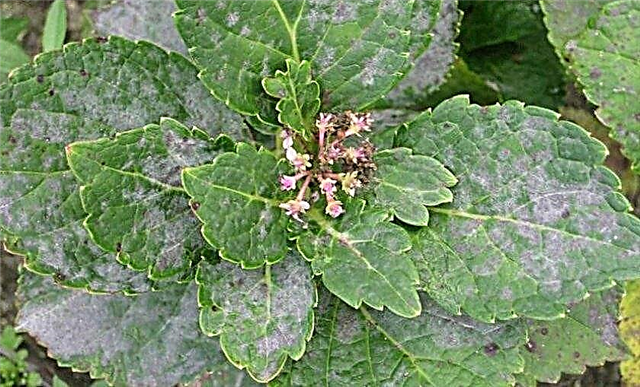
- Septoria Infection affects the plant from the bottom up. Small light spots with a dark brown border appear on the stems and leaves. The bush begins to wither, the leaves dry out and crumble. For treatment, the drug "Ridomil Gold" is used.
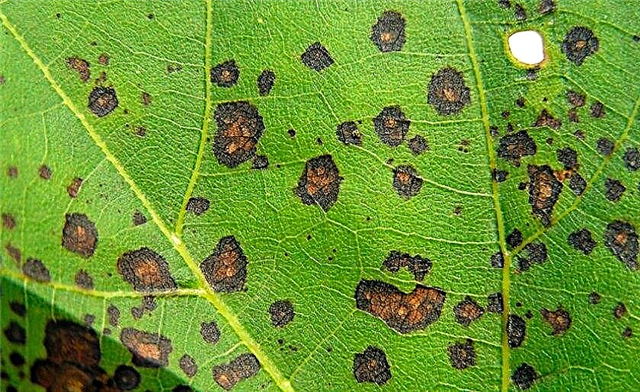
- Ring spotting. The disease has a viral nature and is manifested by spots on leaves that visually resemble rings. The shoots of the bush begin to curl and deform, and the green mass becomes shriveled and falls off. The disease cannot be treated, so the affected specimen must be dug up and destroyed.

- Spider mite. A thin web appears on the hydrangea leaves, and the insect colonies look like small yellow spots. A sign of infection is yellowing of the crown of the bush, twisting and falling of leaves. To combat the pest use "Akarin".

- Aphid. It feeds on the juice of shoots and leaves, causing them to yellow and dry. The bush stops growing, flowering does not occur, and the branches are exposed.Aphids are destroyed using the Iskra preparation.

- Slug. This pest is visible to the naked eye and eats juicy pulp of young shoots. A sign of defeat is eaten leaves. The slugs are collected by hand - they hide under the stones near the bush or in the axils of the leaves.
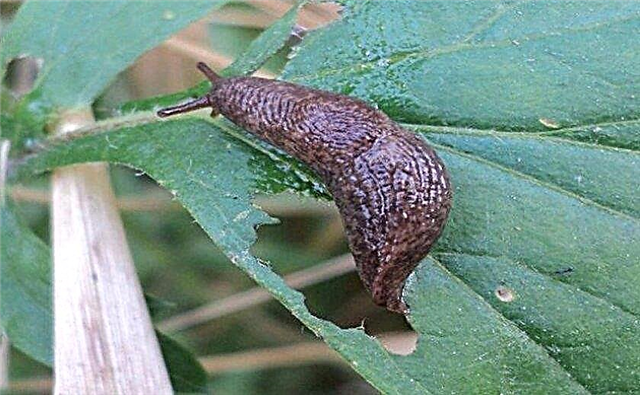
To prevent the appearance of diseases and pests, it is recommended to observe the following preventive measures:
- use high-quality planting material;
- destroy weeds and loosen the soil around the bush;
- observe the regime of watering and top dressing;
- pruning shoots;
- adhere to the recommended plant layout;
- mulch the area of the trunk circle with peat.

Large-leaved hydrangea Masya is more resistant to adverse climate conditions than panicled variety of culture, but she also needs care to maintain a decorative look. Using the information presented in the article, each gardener will be able to independently grow such a flowering bush on his plot, using it to effectively decorate the territory.








